Sourcescrub and Grata are joining forces to deliver the market’s most complete market intelligence platform
Learn more

This series breaks down the combinations of sources, solutions, and data signals top dealmakers use to identify, engage, and win the right opportunities.
This article includes everything you need to know about how dealmakers find direct lending investment opportunities. Keep scrolling for step-by-step instructions to help you identify companies that match your firm’s investment criteria and are most likely interested in raising debt rather than capital.
Direct lending is a type of private debt. Also referred to as “private credit,” private debt happens when investors issue companies non-bank loans that are not available on publicly traded markets. It originally boomed around the time banks tightened their belts following the 2008 financial crisis, and surged from $.5 trillion to just over $2 trillion in the last decade. Bloomberg forecasts that private credit assets under management will continue to grow to more than $3.5 billion by 2028.
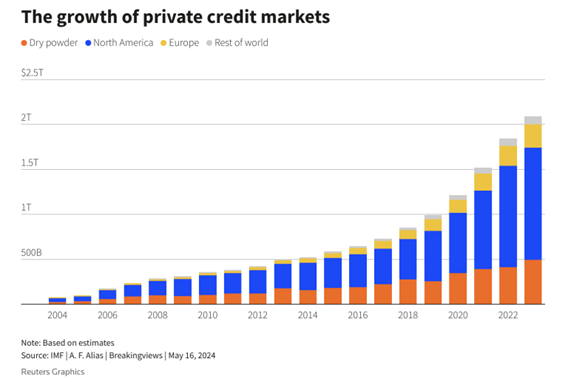
This rise in popularity can be attributed to several key factors, caused mostly by ongoing market uncertainty. Mountains of undeployed capital raised during the post-pandemic deal boom means more negotiating power for founders and operators. One way investors can differentiate themselves and meet top targets’ needs is by offering alternative deal structures to traditional M&A formats. According to Deloitte’s 2024 M&A Trends Survey, 51% of dealmakers have recently pursued alternative financing vehicles like direct lending.
Meanwhile, persistent value gaps caused by investing at peak valuations have left dealmakers holding onto companies for longer than usual. These assets may be unwilling to part with more shares but in need of additional funds to support growth and reach a reasonable rate of return.
In general, private debt offers many benefits for both investors and companies. While yields are lower, they tend to be more stable and predictable than traditional private equity. It also provides investors with portfolio diversification and often acts as a defensive asset class. For businesses, raising debt is faster and easier than raising capital, and the terms are usually more flexible. Existing owners and operators can avoid diluting equity or relinquishing decision making control, and may even be able to “cash out” and pass the debt on to future acquirers.
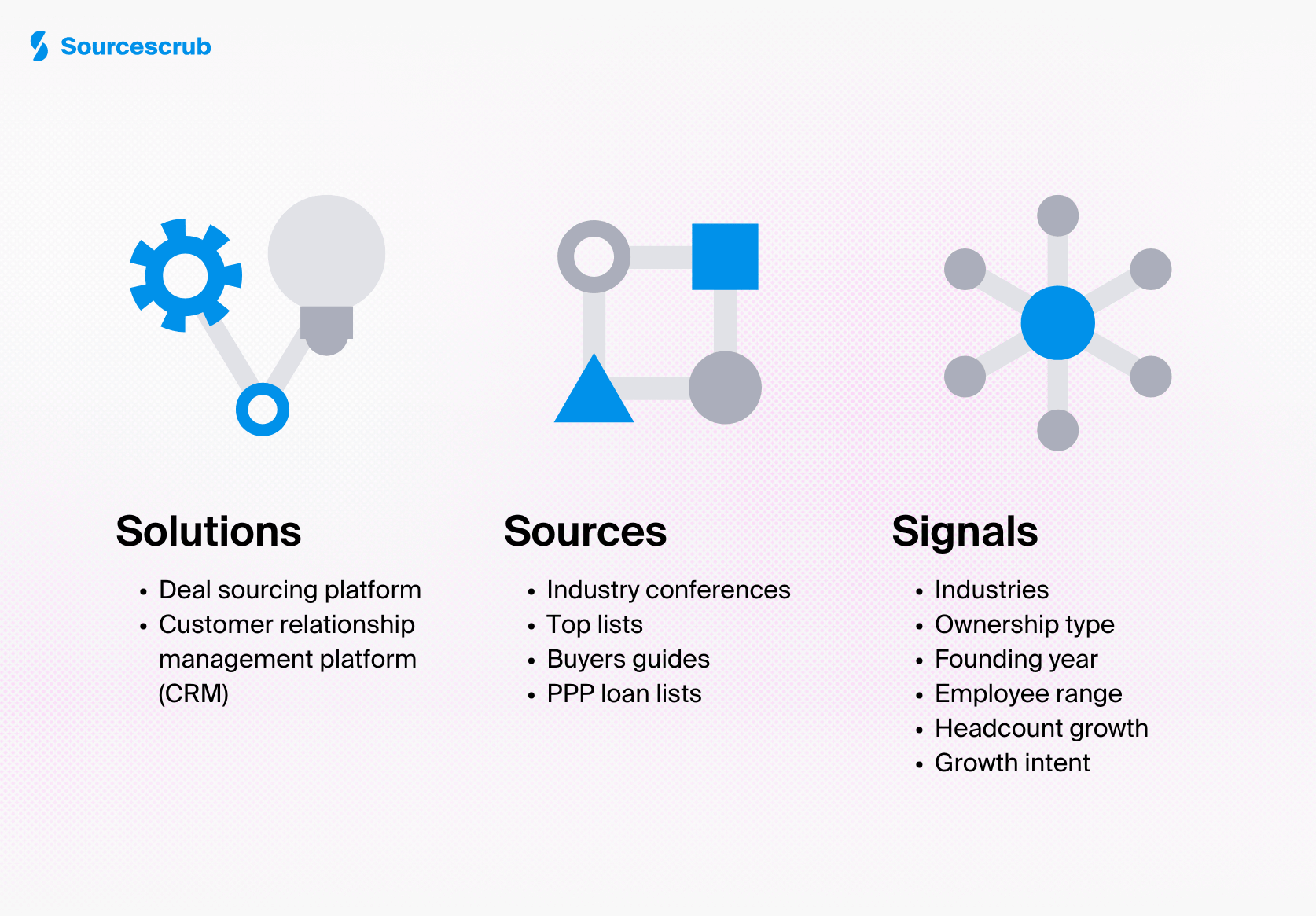
Let’s imagine our firm is looking for direct lending investment opportunities with companies that need additional funds for growth and meet the following criteria:
Keep scrolling for a step-by-step breakdown of how top dealmakers can apply this formula to find ideal direct lending investment opportunities using a deal sourcing platform like Sourcescrub.
First, use Sourcescrub or other deal sourcing platform to select companies in your target industry. Note that the best deal sourcing platforms offer their own, more flexible industry classifications, rather than forcing dealmakers to use rigid, outdated NAICS codes.
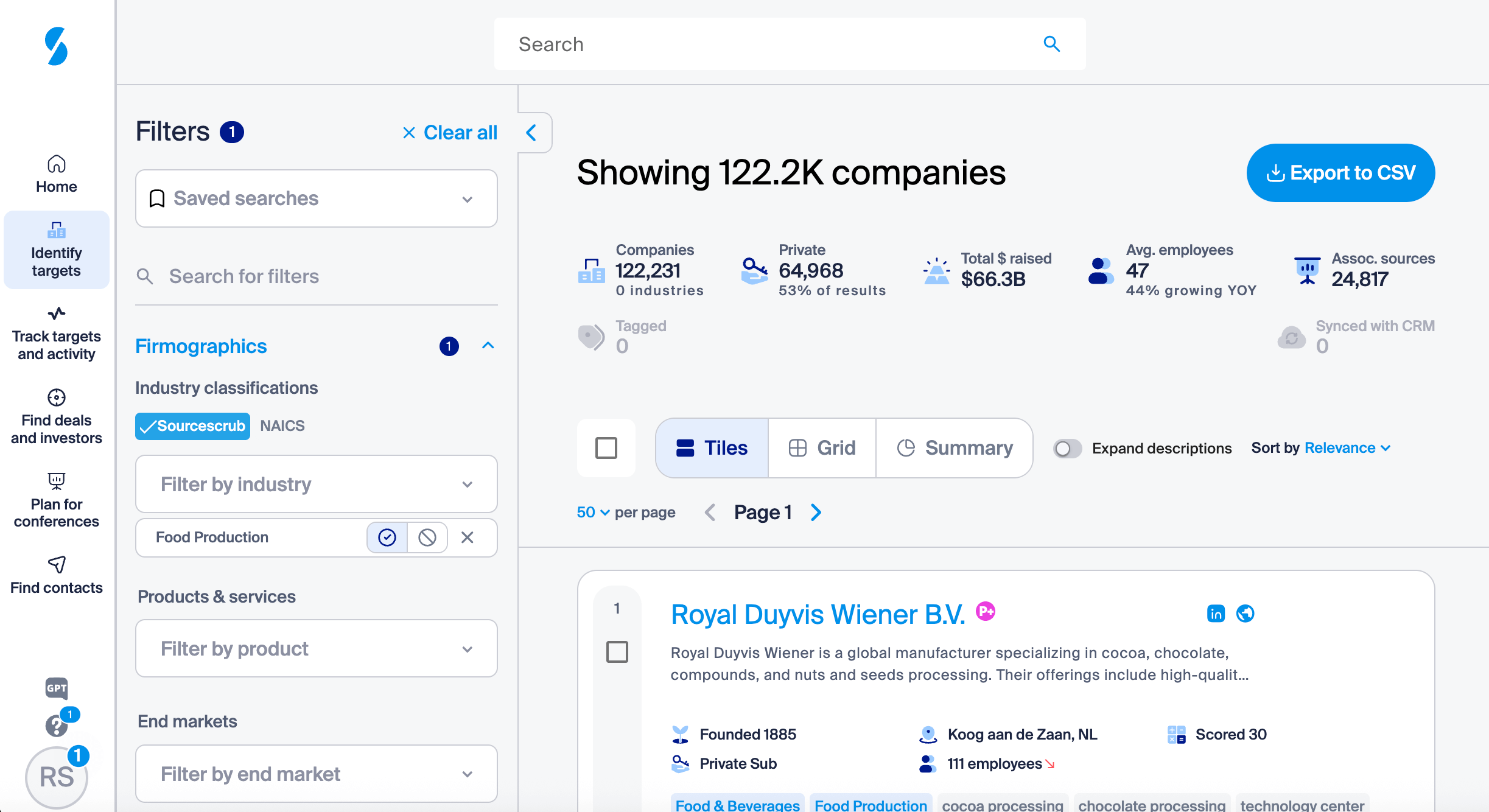
Select your desired location and ownership type. Remember that we are searching for bootstrapped businesses in the United States only.
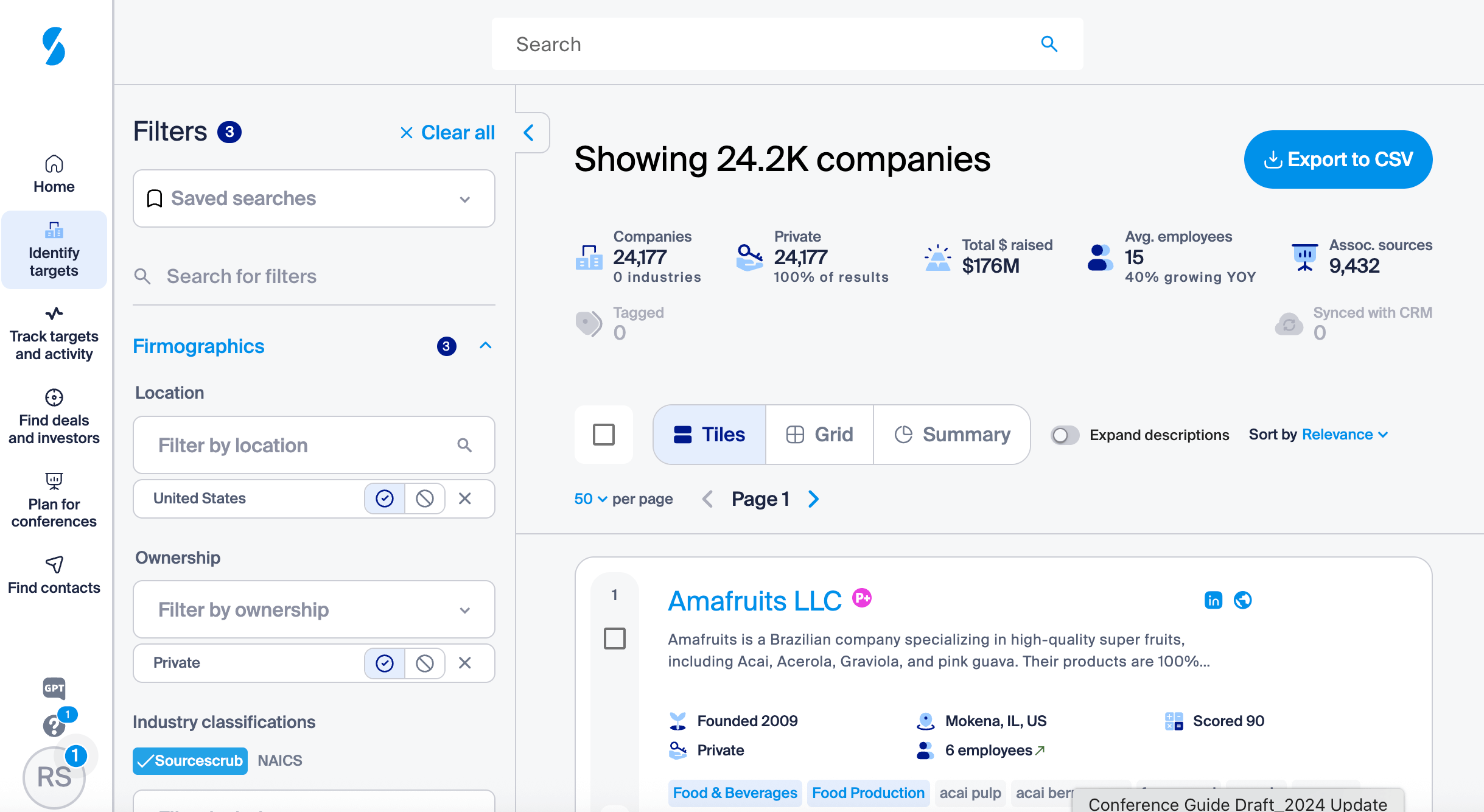
Now it’s time to narrow your selection by founding date. In our example scenario, our hypothesis is that food production companies that were founded prior to 2020 likely ran into supply chain and consumer demand issues during COVID. Those that made it out of the woods while remaining founder-owned could be open to and in need of cash to help fuel post-pandemic growth.
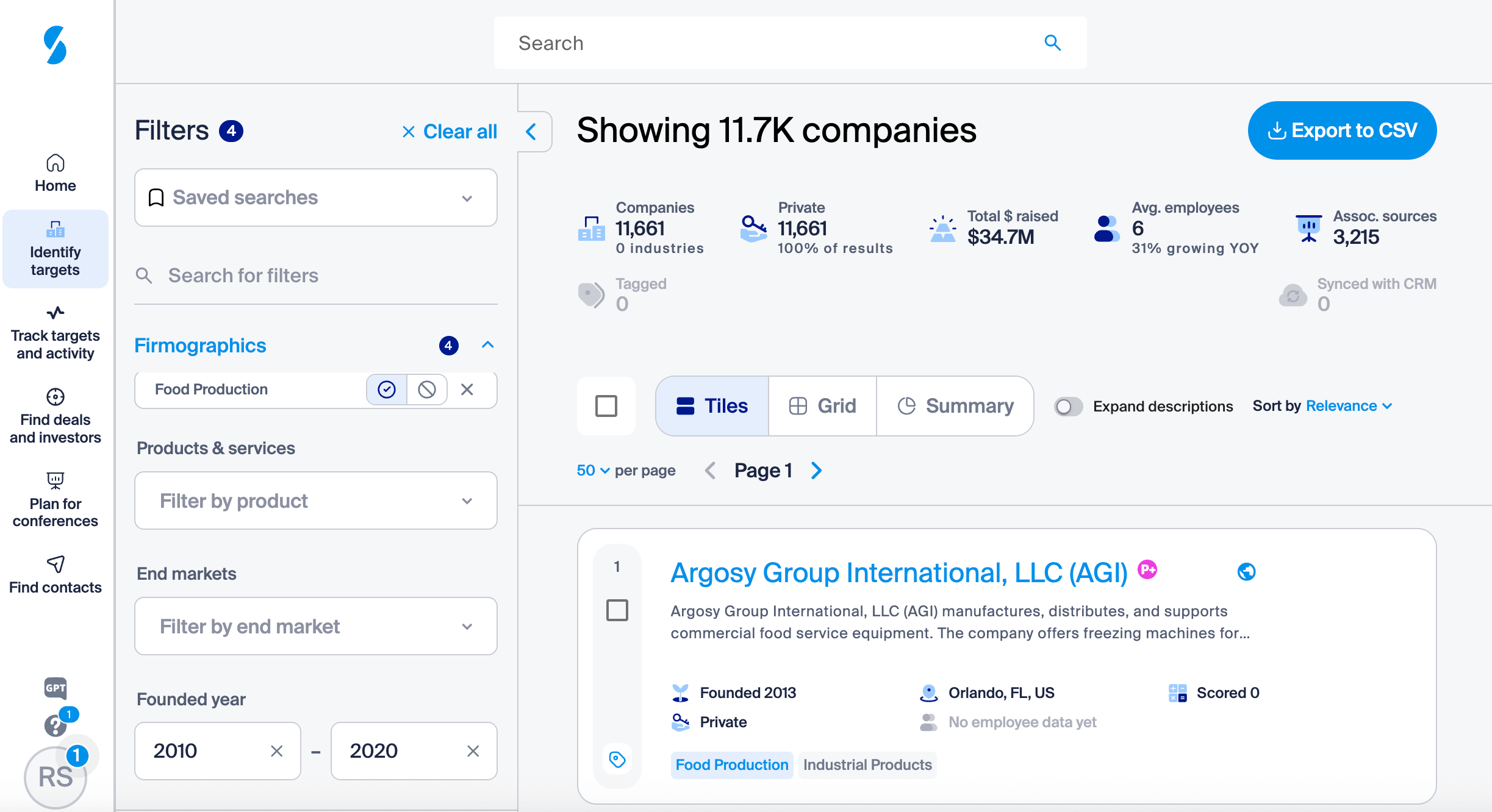
Pro Tip
Looking to further narrow your private credit search by targeting companies that have taken on debt before? Want to zero in on businesses that may be in need of distressed debt or rescue financing? Use a deal sourcing platform like Sourcescrub that allows you to think outside the box by selecting and filtering through specific sources, like PPP loan-related lists.
In our example, we are interested in companies making between $20MM and $50MM in revenue. However, since private companies in the US are not required to disclose this information, we will use employee range as a proxy. We will also estimate $300K revenue per employee, which is on the lower end for this particular industry, making our target range 51-200 employees.

Since we are searching for direct lending investment opportunities, we want companies that are performing consistently but unable to scale without assistance. One of the best ways to infer this is through hiring. Using our deal sourcing platform, we’re quickly able to shrink our list down to five ideal companies where headcount has remained fairly flat over the last year, not shrinking but growing at just 1-5%.
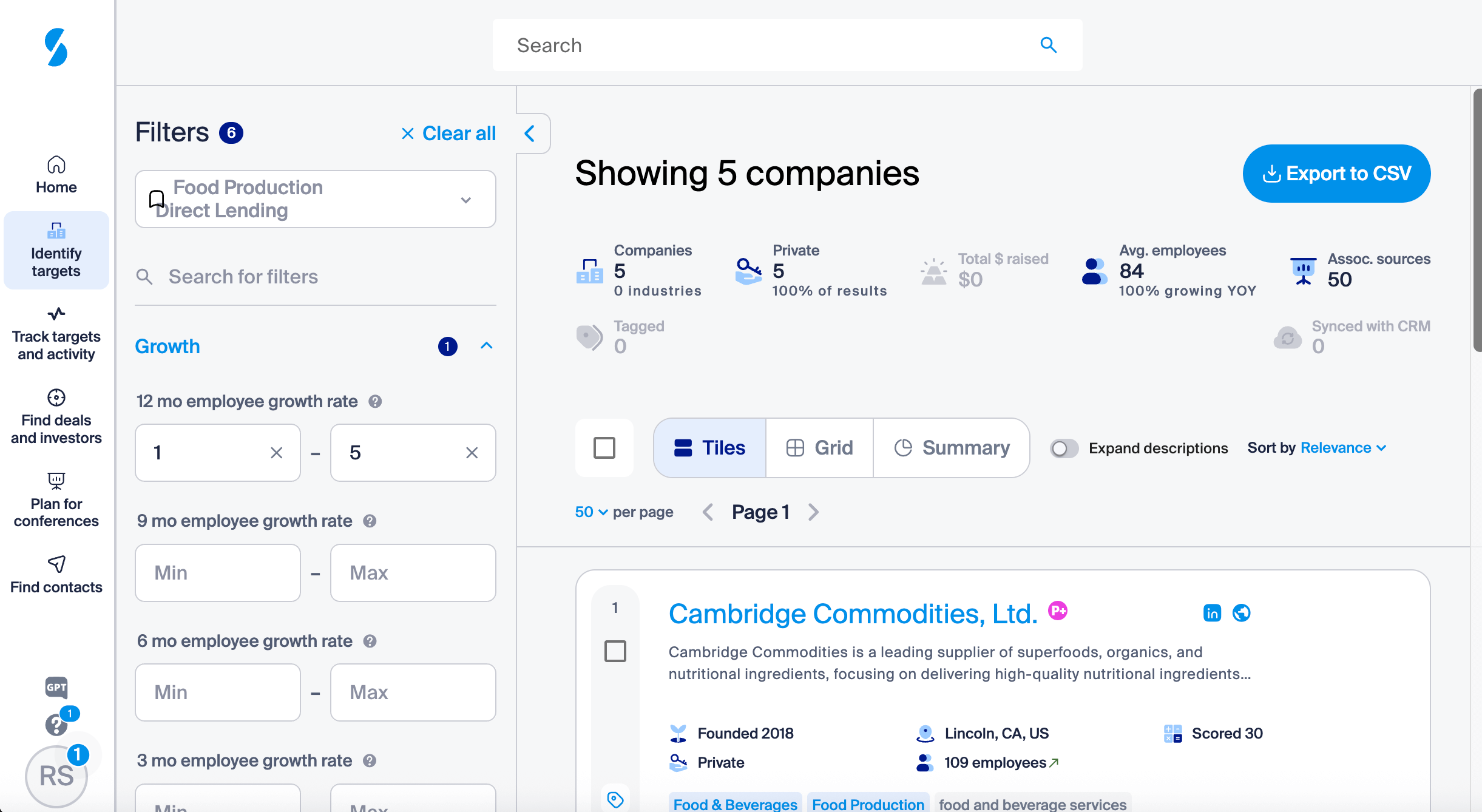
Pro Tip
For a more thorough headcount growth analysis, we could also export this data for the last three, six, nine, and twelve months to our CRM to measure these numbers over time. Growth intent is another helpful hiring-related signal that looks at how many job openings a company has compared to its current number of employees.
Now that you know how to identify direct lending investment opportunities using your deal sourcing platform, check out how one debt financing firm increased its target research and sourcing productivity 2x with Sourcescrub. Read the story here!